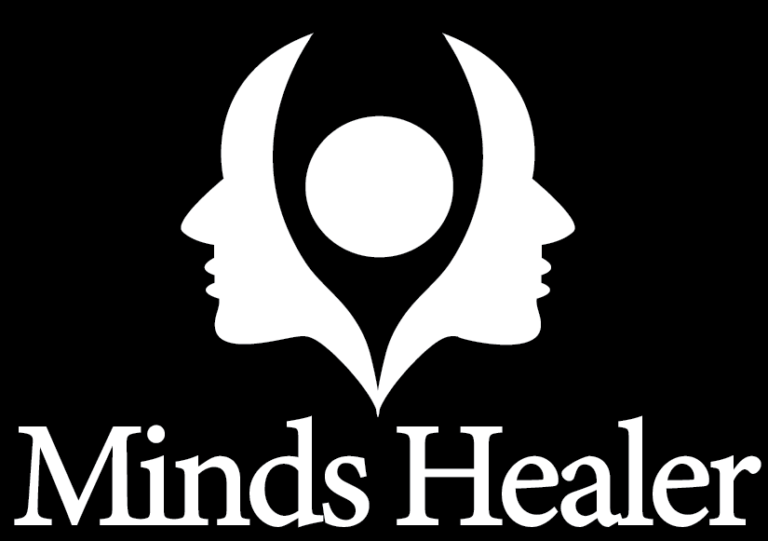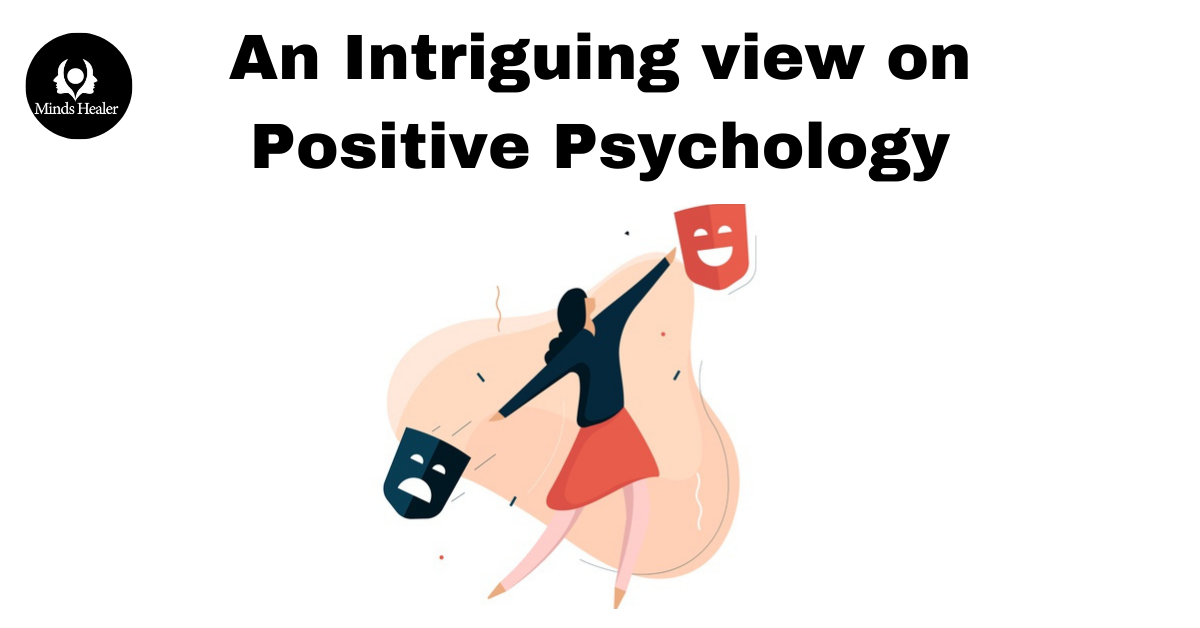An Allegory of Lemonade
A said, “When life gives you lemons, make lemonade.”
But, B chimed in, “Where are the salt and the water? Without it, the lemonade would be obnoxious!”
PP added, “If the lemons signify the hardships in life, the lemonade would symbolize being free from those hardships. But is that ample?”
A replied “Of course!”
PP asked, “But, what will you do about the blandness of that lemonade? I mean, will life be enjoyable by just being free from the hardships, without any mirth or liveliness in it? The salt and water in lemonade are its flavors, the core elements that make the lemonade so mouth-watering; likewise, positive aspects of human nature like positive emotions, strengths, and virtues relish our living and ameliorate our being.”
They say, “What is life without sorrows?” But what even is life without love, joy, hope, interest, amusement, inspiration, awe, etc.? ‘PP’ in the allegory intends to bring to the fore this verity of existence.
Life is a harmonious balance of the good and the bad. Much like the ancient Chinese symbol of Yin Yang which highlights the importance of embracing these dualities of life: the ups & downs, the good times and the bad, the joys and the sorrows.
However, was this dualism espoused by the field of psychology?
For a prolonged period of time, the cornerstone of psychology was to understand abnormal or problematic behaviours of humans – their negative aspects or their weaknesses. Its main focus was treating, preventing and curing mental health problems, much like doing only the ‘repair work’.
But can humans be repaired? Isn’t it a very restricted approach to focus just on what is lacking instead of focussing on what a person possesses like his/her strengths or potentials that make them thrive in the face of adversities?
Martin Seligman addresses this bone of contention. He said that, “Psychology is not just the study of weakness and damage; it is also the study of strength and virtue. Treatment is not just fixing what is broken; it is nurturing what is best within us.”
The study of these strengths and virtues is coined as ‘Positive Psychology’ (also, the PP of the allegory ☺) by him.
Catching the Drift of Positive Psychology
Positive Psychology, the field that is formally only 2 decades old, is one of the most recently developed approaches in psychology but at a tangent to the former prevailing ones. It aims to understand the various positive, adaptive, creative, and emotionally fulfilling aspects of human behavior.
It is a scientific study of “what makes enables individuals and communities to thrive” (International Positive Psychology Association, 2009). The goal of positive psychology is to-
- Understand positive human functioning and flourishing
- To strengthen the factors that lead to growth and well-being
- Instead of revolving around human weaknesses or treating the bad.
As Peterson (2008) precisely delineated, “Positive psychology is about taking the lives of the average people up to great instead of focusing solely on moving those who are struggling up to the normal.”
Now does the allegory on the importance of a mouth-watering lemonade over a bland one come into perspective? Why aim for normal when you can aim for the great?
The Antecedents of the Present-Day Positive Psychology
Psychology’s narrow approach and over-occupation with mental disorders and illnesses heightened the frustration then experienced by Martin Seligman. He noticed that there was almost no recognition for the concepts of quotidian like happiness or well-being. This prompted Seligman, who was then the president of the American Psychological Association, to take this opportunity to alter the direction of the field of psychology and provide a new orientation to this discipline in 1998.
He urged various experts in the field to hark back to the forgotten mission of psychology viz., to build human strength and to nurture growth. He coined the name of this new branch as ‘Positive Psychology’ which would focus on aspects of human behavior that are life-giving rather than life-depleting.
The pioneering paper on positive psychology was published in the year 2000 was authored by Seligman and Mihaly Csikszentmihalyi. The contributions of Seligman to this field are unparalleled and supremely treasured. He is rightly called the ‘Founding Father’ of this field.
Since the inception of this field, there has been a proliferation of research studies investigating the various facets of this field. In no time, the applications of positive principles expanded and extended to several other domains of an individual’s life like organizations, teaching, relationships, parenting, etc.
Soon, by the virtue of significant scientific gains in positive psychology, in 2006, Seligman widened this practice into a fully-fledged therapeutic approach called Positive Psychotherapy (PPT). This therapy rests on the hypothesis that mental illness like depression can be treated in an efficacious manner by not only treating the negative symptoms but also by directly building various positive resources like positive emotions and character strengths (Seligman, Rashid & Parks, 2006).
However, it is important to underline that positive psychology does not involve discrediting or paying no heed to the very real problems that people face. This field simply complements and expands the horizon of problem-focused psychology.
An Outline of the Prominent Concepts in Positive Psychology
In this specialty, a plethora of research has focused on topics like happiness, positive emotions, well-being, life satisfaction, resilience, character, strengths and virtues, flow, etc. These topics are indigenous to the field of positive psychology and are investigated in order to understand how to help individuals to flourish and make the best of their lives.
Happiness: Seligman proposed that happiness consisted of the pleasant life, the engaged life and the meaningful life.
- Pleasant life – This is attained when people can experience positive emotions about their past, present, and future.
- Engaged life – This is an experience when the individual is deeply involved and engrossed in what he/she is doing, may it be at work, or in a relationship, or at play.
- Meaningful life – It is felt when the individual uses his strengths and virtues to serve something larger than themselves. It can be as simple as doing good for society by volunteering or cleanliness-drive, etc.
Positive Emotions: According to Barbara Fredrickson, there are 10 emotions that are considered as ‘the big 10 emotions’ that are fundamental in happiness and subjective well-being –
- Love
- Joy
- Gratitude
- Serenity
- Interest
- Hope
- Pride
- Amusement
- Inspiration, and
- Awe
She theorized that these positive emotions have a broadening effect which allows us to become more flexible and creative in our thoughts and actions. Through this, our physical, intellectual, psychological, and social resources are built and strengthened. This is known as her ‘Broaden-and-Build’ theory.
Life Satisfaction: Life satisfaction is the positive evaluation of your life in its entirety and not just your present affect.
Subjective Well-being: Subjective Well-Being is “people’s cognitive and affective evaluations of their lives” (Diener, 2000).
- Cognitive evaluation means what we think about our life as a whole or with respect to specific areas of life like work, relationships, etc.
- Affective element signifies our emotions, moods, and feelings. When our emotions, moods, and feelings are pleasant, then our effect is considered to be positive and vice versa with negative affect.
SWB is our subjective evaluation of what makes us happy or satisfied and not necessarily what universally makes people happy.
Character Strengths and Virtues: In the realm of positive psychology,
- Strength is a capacity for feeling, thinking, and behaving to allow optimal functioning in the pursuit of valued outcomes.
- Character is how we conduct ourselves in society and
- Virtues are ideal states that facilitate adaptation to life.
Peterson and Seligman’s classification of strengths and virtues is called the Value In Action (VIA) Classification of Character Strengths and Virtues. According to this, there are 24 strengths that fall under the 6 overarching core virtues. They are –
- Wisdom and knowledge – Creativity, open-mindedness, love of learning, curiosity, and perspective.
- Courage – Bravery, persistence, integrity, and vitality.
- Humanity – Love, kindness, and social intelligence.
- Justice – Citizenship, fairness, and leadership.
- Temperance – Forgiveness, humility, prudence, and self-regulation.
- Transcendence – Gratitude, hope, humor, appreciation of beauty, and spirituality.
Resilience: It is our ability to recover from hardships and adapt to challenging situations. It does not mean that you would not be knocked down by these setbacks but what matters is how fast and effectively you could bounce back to normal functioning. A person, who is resilient, copes with crisis using various personal resources, strengths, and positive attributions like hope, optimism, and self-efficacy.
Flow: Mihaly Csikszentmihalyi, also considered the second founding father of positive psychology, observed that people from all kinds of artistic backgrounds, musicians, writers, athletes immersed in a peculiar state while they were working. This state had certainly removed out the ordinary features and had replaced them with the following impressive ones –
- Intense focus
- Superior concentration
- Losing track of time for hours together
- Wholly present in the actions with limited focus on oneself
- A sense of control
- To them, the activity felt intrinsically rewarding and enjoyable.
Csikszentmihalyi postulated that this occurs when both – our skills and the perceived challenges – our high. If even one of them is low, the state of flow is not induced.
Positive Life Hacks
Here are some effortless yet effective therapeutic exercises based on the premises of positive psychology. These can be employed by everyone for flourishing in life and attaining higher life satisfaction and increased subjective well-being.
- Three Good Blessings: Each evening, try to write down three good things that came about that day and why you believe they happened?
- Gratitude Visit: Try to reflect and bring to mind someone to whom you are very grateful, but who you have never thanked properly. Now, write a letter to them that describes how thankful you are for having them in your life. Read that letter to the addressed person via phone or in person.
- Active-Constructive Responding: This is a kind of response where you react in an evident positive and enthusiastic manner to good news you heard from someone else. So, try to do this at least once a day by responding actively and constructively to significant others.
- Savouring: Usually, we are in so much rush that we hurry through most of our quotidian tasks like eating a meal or taking a shower. But once a day, try to take the time to enjoy these things and savor the moment. When it is over, write down what was done, how did you do it differently, and how it felt in comparison to when you hastened through it.
- Forgiveness: On a paper, list the names of the people you wish to forgive. Write a letter addressing each of them where you express your feelings and whatever you suffered because of them. Here, you also have to add that you are forgiving them completely and now burn this letter in an open space. Make sure you repeat this throughout the week.
- Journaling: Journaling has shown to be very beneficial because it gives you clarity and stay positive. It helps you create a distance between you and your thoughts. Answer these three questions while you do this –
- What did you do today in a good or satisfactory way?
- What can you do better than this tomorrow?
- What is the motivation behind the goals you have set for yourself?
Daily try to write in your journal the answers to these questions.
These are some research-supported tools to help you make the best of your life.
To conclude, it was correctly said by Seligman, “While you can’t control your experiences, you can control your explanations.”
Your explanation of the situation will determine how you react to it, for example, if you take a setback as learning or a challenge instead of a failure, then you would work harder and it may lead to a breakthrough. But if you explain it as a failure, you are more likely to breakdown. There is a fine line of difference between this breakdown and breakthrough and that fine line is your explanation of the situation.
Choose your explanations wisely!
REFERENCES –
- Ackerman, C. E. (2020, April 16). What is Positive Psychology & Why is It Important? [2020 Update]. Retrieved May 6, 2020, from https://positivepsychology.com/what-is-positive-psychology-definition/
- Cherry, K. (2020, February 16). Can Positive Psychology Really Help You Lead a Happy Life? Retrieved May 5, 2020, from https://www.verywellmind.com/what-is-positive-psychology-2794902
- Compton, W. C., & Hoffman, E. (2013). Positive Psychology: The Science of Happiness and Flourishing (2nd ed.). Belmont, CA: Wadsworth.
- Diener, E. (2000). Subjective well-being: The science of happiness and a proposal for a national index. American psychologist, 55(1), 34.
- International Positive Psychology Association. (2009, October 15). Welcome to the IPPA network online. Retrieved on May 5, 2020, from http://www.ippanetwork.org/Home/
- Moore, C. (2019, December 30). Subjective Well-Being: Why Is It Important and How Can We Measure It. Retrieved May 6, 2020, from https://positivepsychology.com/subjective-well-being/
- Peterson, C. (2008). What is positive psychology, and what is it not? Psychology Today. Retrieved from https://www.psychologytoday.com/us/blog/the-good-life/200805/what-is-positive-psychology-and-what-is-it-not
- Seligman, M. E., Rashid, T., & Parks, A. C. (2006). Positive psychotherapy. American psychologist, 61(8), 774.
- Seligman, M. E., Rashid, T., & Parks, A. C. (2006). Positive psychotherapy. American psychologist, 61(8), 774.
- Singh, A. A. (2020, April 14). Council Post: Want To Upgrade Your Life? Apply These Five Positive Psychology Tools. Retrieved May 7, 2020, from https://www.forbes.com/sites/forbescoachescouncil/2020/04/07/want-to-upgrade-your-life-apply-these-five-positive-psychology-tools/#386a2c1e4e77
Please visit our website to read more related blogs!



